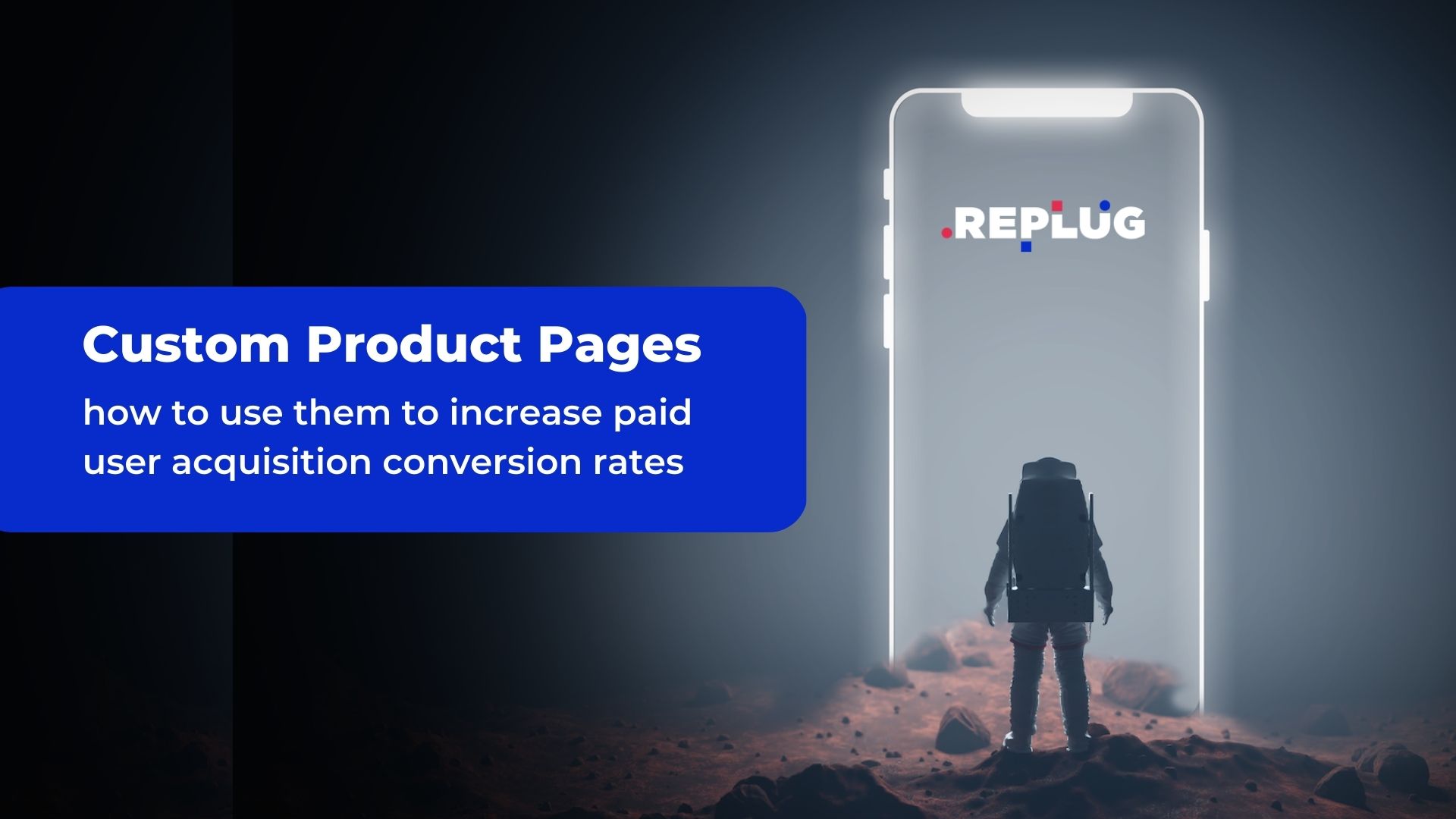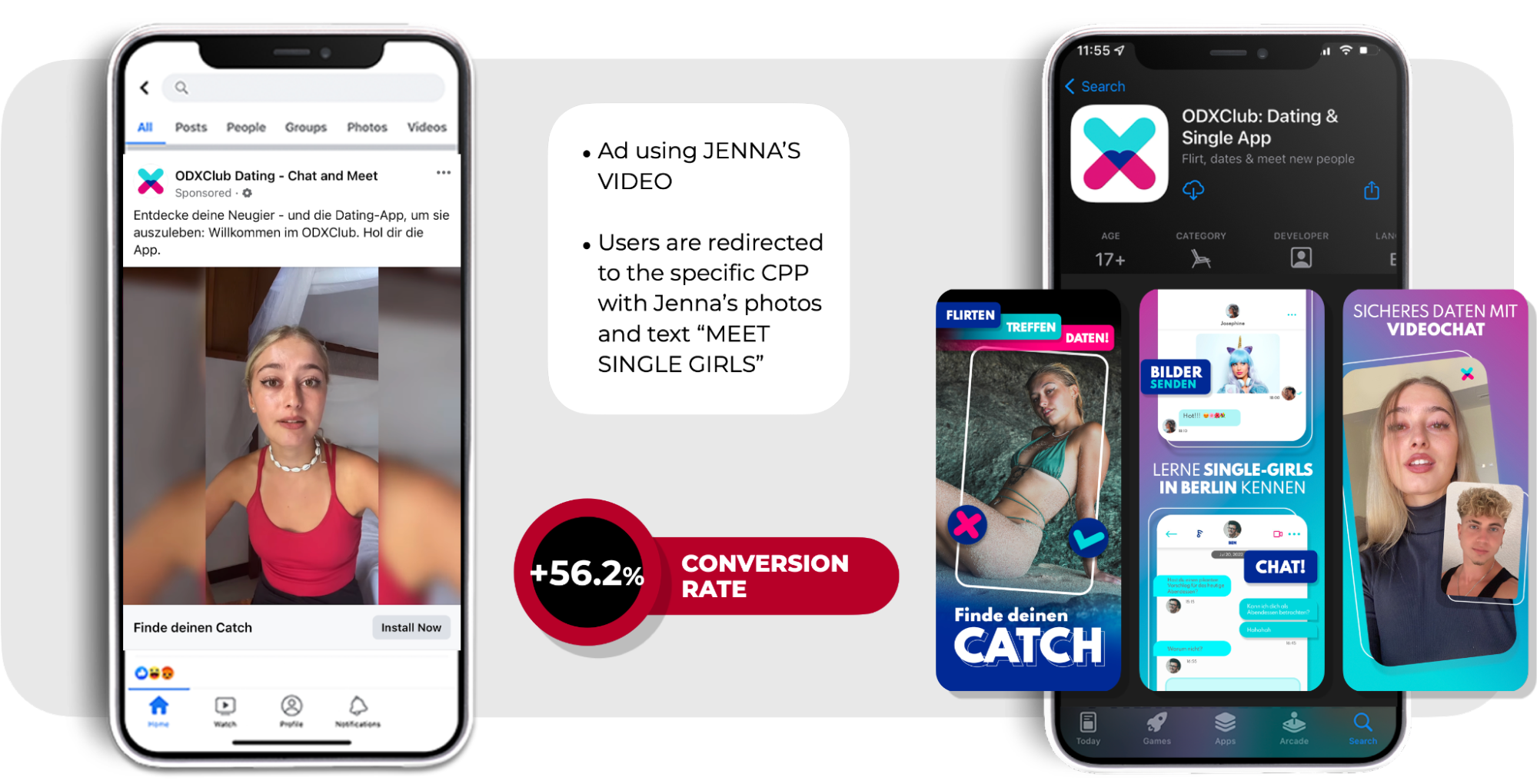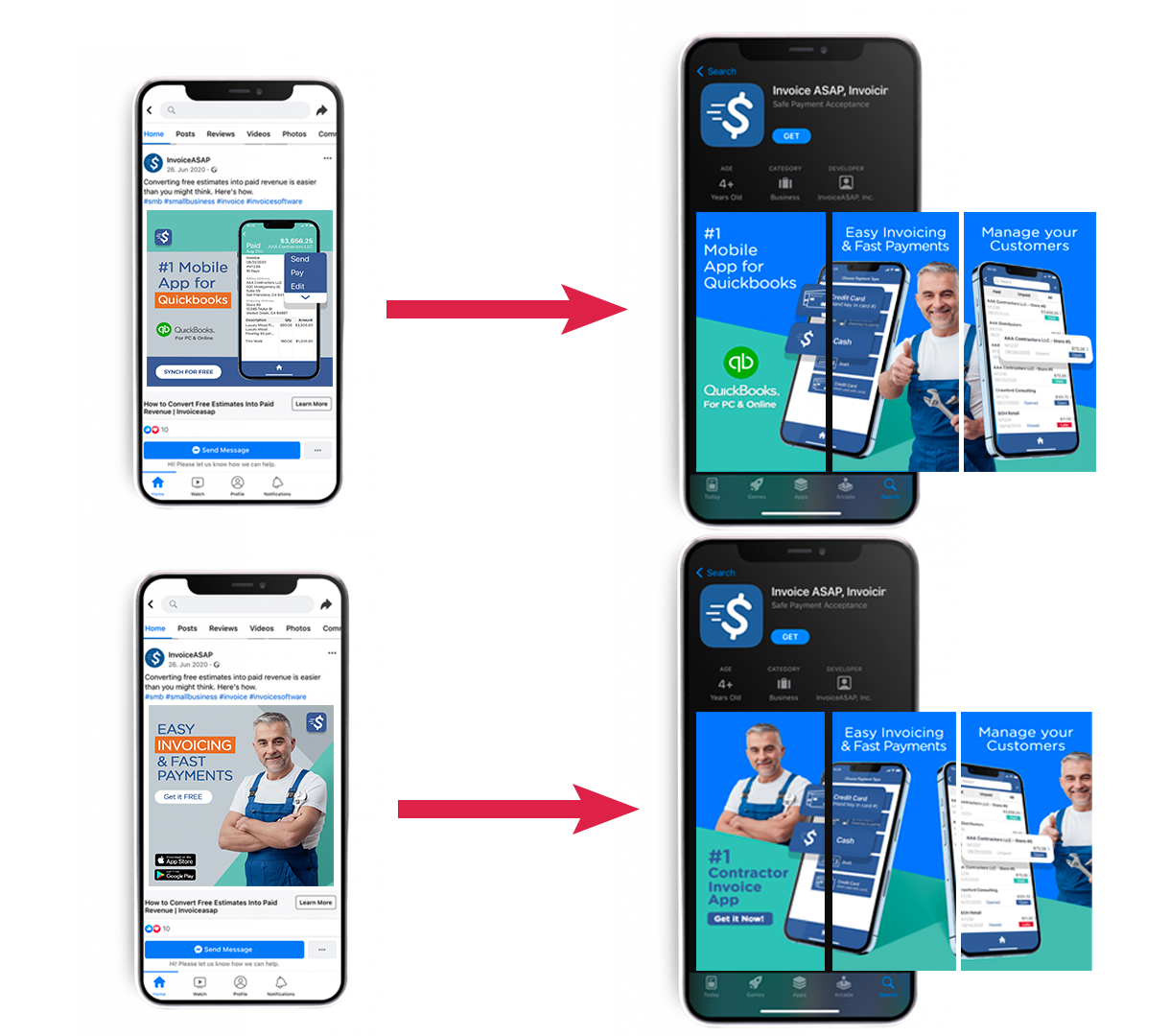Using Custom Product Pages to increase paid acquisition campaigns’ conversion rate
- Friday, January 20th, 2023
- Share this article:
Luca Mastrorocco, Co-Founder at REPLUG, explains how app marketers can use Custom Product Pages to best effect.

With the release of iOS 15, Apple introduced Custom Product Pages (or CPPs) in the App Store. CPPs were the alternative feature that app marketers had been looking for since Apple stopped its Creative Set testing.
CPPs aim to give a consistent message and product page design from the traffic source to the landing page. Consequently, consumers will grasp the content more easily and convert more effectively, while app marketers will reduce user acquisition expenses in the App Store.
While we wait for CPPs for additional channels, we have heavily utilized this capability at REPLUG for our clients campaigns, gaining learnings and intriguing results.
What exactly Are Custom Product Pages?
Custom Product Pages are variations on your regular App Store product page. You may design up to 35 unique product pages per app, each with its own set of app screenshots, sample videos, and iOS advertising text.
Each CPP you build will be distinct from your standard product page and will have its own URL. That URL may be linked to sponsored campaigns such as Apple Search Ads and can be used as a landing page for targeting specific keywords.
Custom Product Pages are only accessible via their unique URL, featured in paid app campaigns or tailored options such as Games, the Today tab, and Apps.
In summary, CPP enables you to match your ad content, creatives, and users to the appropriate landing page. If consumers click on the mens workout equipment ad, the landing page will include material that fits their search intent.

What are the benefits of utilizing Custom Product Pages in our app?
The benefits of employing CPPs for our app marketing efforts are numerous, and although some may be obvious, its worth spending a few minutes detailing them here below.
1. Highlighting specific app features or products
Many applications provide many features/services. Most critically, each feature or service may appeal to a distinct segment of customers, especially when determining whether to download the app.
For instance, we may test multiple CPPs focusing on each product with different graphics and CTAs for an app offering podcasts, audiobooks, news, and book summaries.
2. Speaking to various demographics
With the same concept in mind, we may also tailor CPPs to speak to specific demographics, increasing ad relevancy and potential conversions from impression to install.
This applies to a wide range of industries. So far, weve seen outstanding results for shopping and eCommerce applications, dating apps, and health and fitness apps where we could develop CPPs that appeal to both men and women.
3. Taking advantage of seasonality
Weve been required to update our standard product page screenshots much too frequently due to a certain time of year (Black Friday, Christmas, New Year, etc.).
Even though this may not be a huge issue, Black Friday is a promotional period for all users. CPPs now allow us to separate the messaging on the Store for various categories of users. This form of promotional segmentation improves conversion rates.
4. A/B test various visual assets
Although Apple provides Product Pages Optimization (PPO), CPPs may allow us to evaluate graphic assets more swiftly. The PPO feature is intriguing, but if youve used it, you know its not as robust as its Google Play counterpart.
As a result, creating Custom Product Pages to test graphic assets may be an appealing option for many marketers.
Disclaimer: When considering employing CPPs for A/B testing, we must keep two things in mind:
- Because paid traffic differs from organic traffic, we must pay close attention to the outcomes
- We must modify just one variable at a time, like with any A/B test
5. Increasing the efficiency of offline campaigns
Take it one step further by incorporating the unique CPP link into a QR code on a billboard and begin tracking how many offline users convert to a customized product page explicitly created for that offline campaign.
The benefits of CPPs are numerous and diverse. These are perhaps the most intriguing from our standpoint.
The simple conclusion is that CPPs assist us in increasing the relevancy of our ads. We had put up with the App Stores limits for far too long, and now we have a real potential to improve the conversion funnel with a tailored experience for our consumers.

How REPLUG used CPPs to increase paid campaign conversion rates
As part of our effort to scale acquisition activities, REPLUG has been actively testing CPPs for our partners. As seen in our paid user acquisition frameworks 5th step, “Optimization & Testing,” CPPs are critical in identifying cross-functional possibilities to lower acquisition costs.
We have acquired some great learnings on how to utilize CPPs for app marketing efforts after running dozens of experiments in different industries over the previous 12 months.
1. Adapt user-generated content to CPPs
Our paid user acquisition team discovered, with CPPs in combination with ads, that we could take the personalized experience to a new level when employing UGC ads.
We tried this, particularly for another dating partner of ours, ODXClub, for whom we had been spending a considerable budget on user-generated content advertisements on paid social platforms such as Facebook and Instagram.
Our paid user acquisition specialists have already experimented with audience tailoring using CPPs (i.e., showcasing different male and female screenshots).
Nevertheless, because we wanted to match the characters in the advertisements on the screenshots, we reached out to the best-performing content creators. We obtained permission to put their photographs on the screenshots.
Just simply displaying a real person in the screenshots, the same individual that consumers were viewing in the advertising, the conversion rate jumped by 56.2 per cent, resulting in a 33 per cent lower cost per acquisition compared to the identical ad pointing to another app store page.

ODXClub – a real example of a custom product page by REPLUG
2. Target the proper audience or USP with the CPP
The most basic yet successful technique to encourage user conversion is to display the same product or service featured in a Facebook ad on the CPP screenshots. But what if we target our ideal audience not just with relevant ads but also with suitable CPP screenshots?
We opted to implement this sort of testing with CPPs for one of our partners, InvoiceASAP, a leading invoicing application in the US, with a mix of ads optimization activities and creative optimization for both ads and Store screenshots.
The cost per acquisition was reduced by 24.5 per cent on average across all audiences using this basic yet successful optimization and testing technique.

3. Create CPPs for a set of keywords in search ads
The final exciting takeaway from these 12 months of intensive testing is that we can obtain amazing results with Search Ads, owing to Custom Product Pages. One of our health and fitness partners offers a selection of goods and activities tailored to specific purposes.
Our team addressed the requirement to develop unique CPPs that would appeal to a particular group of keywords focusing on a certain sort of workout, such as the chest, abs, and glutes exercises, as well as keywords focusing on losing weight and enhancing body form.
With this sort of test, we could significantly boost the IPM, but more crucially, the cost per subscriber since ad relevancy increased dramatically.
Conclusion
Custom Product Pages are an unquestionably useful feature for app marketers. However, like with anything, it is our job to make the best of them. We may employ them in their most basic form or test new ideas creatively to improve outcomes.
CPPs address a significant problem for us marketers, particularly on platforms such as Facebook, where user intent to engage with advertisements is minimal. With Apples innovation, we can better address our audiences demands and improve the ad experience, efficacy, and conversion funnel.
Are you looking to integrate custom product pages in your paid user acquisition strategy? Get in touch with Luca Mastrorocco, REPLUG co-founder and head of growth, at luca@rplg.io.
















